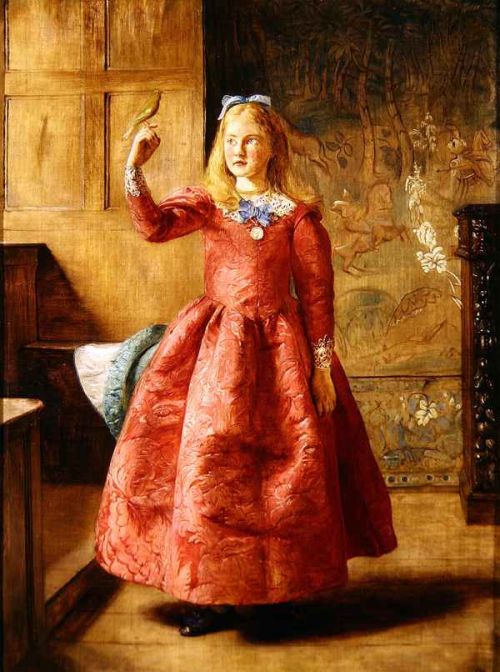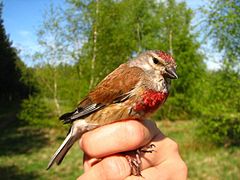|
More synchronicity
On Friday, a friend and I were discussing Yeats, who has been my favorite poet since I took a course on him in college at age 19, and I recited his famous early poem, “The Lake Isle of Innisfree” (1892), which includes the lines,
There midnight’s all a glimmer, and noon a purple glow,Also, in thinking about the poem recently, I had wondered what kind of bird is a linnet, since I didn’t think linnets live in North America. Then I came home, went online, clicked on Laura Wood’s site, and this was the first thing I saw:
 Girl with Linnet, James Archer (1865) After I told Laura about the coincidence, I asked her: What let you to find and post that painting? What was going on your thoughts at the time?She replied:
I was looking for a painting that was a diversion. I went to the site, Victorian/Edwardian Paintings, which I like, and I saw it. At first I thought it was too sentimental and passed over it, but then I went back and looked at the girl’s expression—she looks like she is trying not to breathe so the bird won’t fly away—and I liked it. Her sumptuous dress, the delicate bird and the sun shining through the window into a very formal room all make it interesting.Also, 1865, the year Archer made the painting, was the year of Yeats’s birth. I should also mention that In Yeat’s much later poem, “A Prayer for my Daughter” (1919), the linnet plays a major part:
May she become a flourishing hidden treeAccording to Wikipedia, the linnet lives in Europe, Asia, and North Africa.
It is a slim bird with a long tail. The upperparts are brown, the throat is sullied white and the bill is grey. The summer male has a grey nape, red head patch and red breast. 
See my previous experience of synchronicity involving Yeats and my fellow traditionalist blogger Laura Wood. Finally, since we all need to escape from time to time from the insane so-called reality in which we live, here is a poem about such an escape, “The Lake Isle of Innisfree”:
I will arise and go now, and go to Innisfree, Posted by Lawrence Auster at June 19, 2011 04:57 PM | Send Email entry |